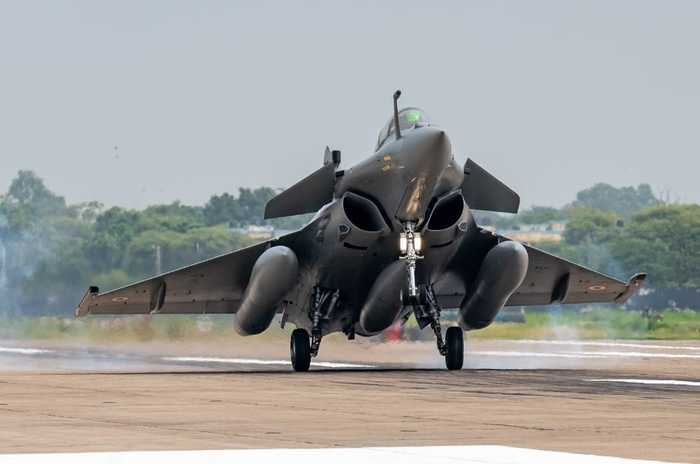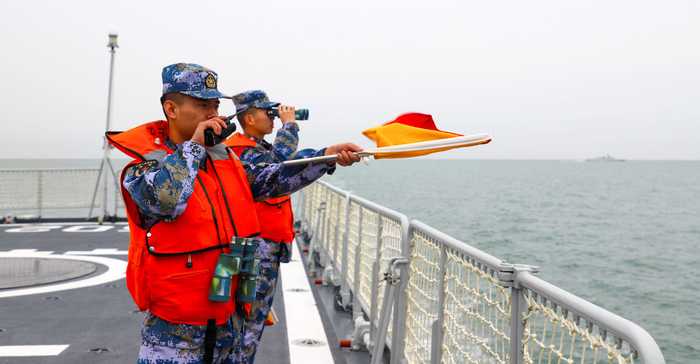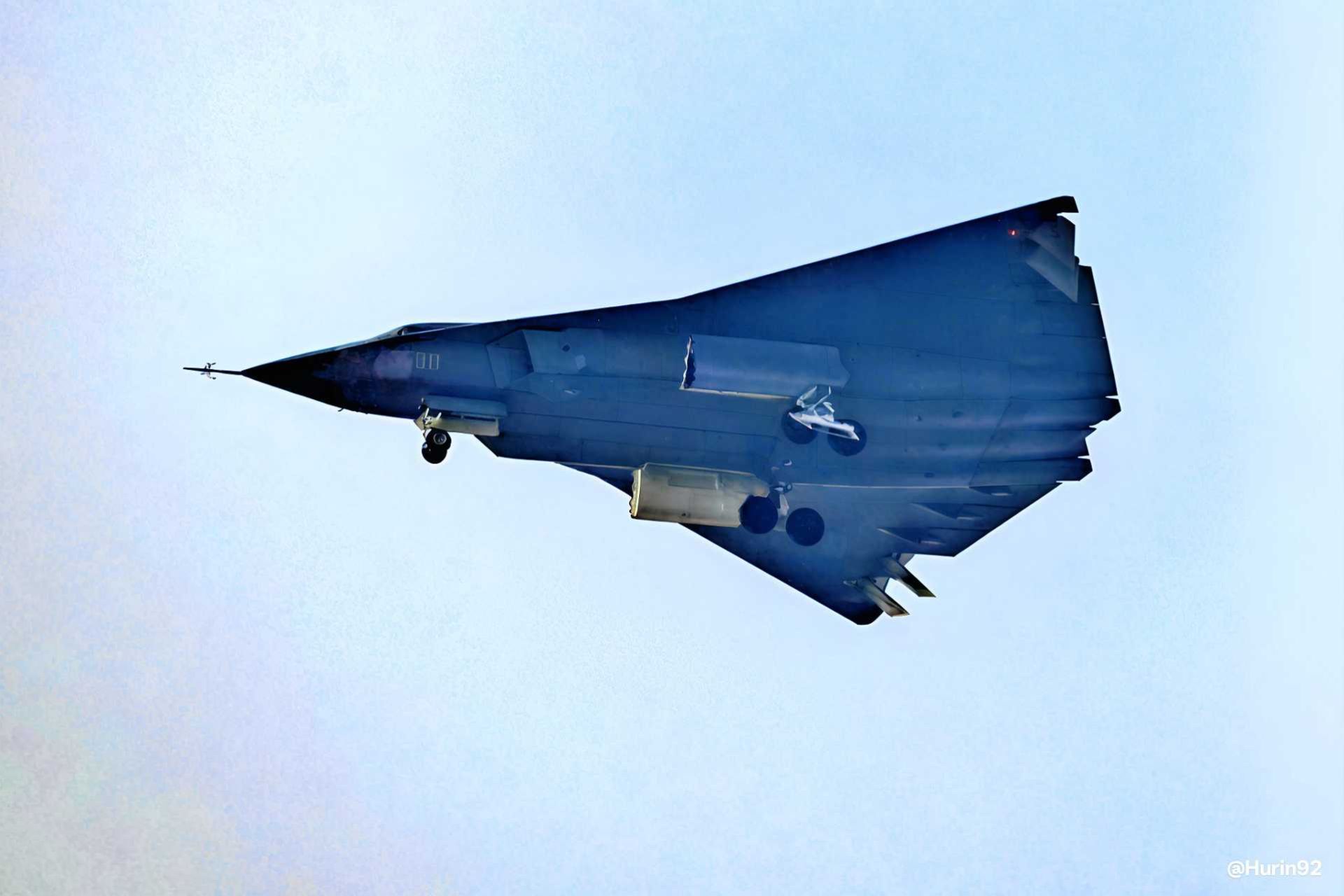Published 18:30 IST, December 30th 2024
As China Advances with 6th-Gen Fighters, IAF Faces Critical Shortage of Modern Aircraft
As China reveals its 6th-generation fighter prototype, India faces mounting concerns over its air defence capabilities.
- Defence
- 5 min read
New Delhi, India - As China unveils its much-anticipated 6th-generation fighter prototype, India's air defence situation has come under increasing scrutiny. With China's cutting-edge developments in aerospace technology, the Indian Air Force (IAF) is facing a critical shortage of 4.5-generation aircraft. Sixty-two years after the brutal 1962 Sino-Indian War, the gap between India's and China’s offensive air capabilities has never been more pronounced, and experts warn that India may struggle to maintain air superiority in the event of an escalated conflict, particularly if a second front opens with Pakistan.
The Growing Military Imbalance
The recent unveiling of China's 6th-generation fighter prototype has raised alarms in defence circles, especially when compared to India's stagnating air power. According to a detailed Indian assessment, the People’s Liberation Army-Air Force (PLAAF) is projected to have close to 50 fighter squadrons by 2030, including 4th-generation fighters, approximately 10 squadrons of 5th-generation J-20 stealth fighters, early iterations of J-35 fighters, and several squadrons of H-6 long-range bombers.

In contrast, the IAF, which currently operates a fleet of 31 squadrons, has seen its numbers dwindle to their lowest since 1965. These numbers fall far short of the required strength to counter China's growing air might. By 2030, the IAF is expected to have only 32-34 squadrons, with many of the current fleet consisting of ageing platforms like the MiG-21, which are being kept operational longer than planned to avoid further reductions in squadron strength.
The gap in technological advancements between China and India has been laid bare, with China developing next-generation aircraft like the J-20 and J-35, while India is still in the process of introducing 4.5-generation fighter aircraft into service. Air Chief Marshal Amar Preet Singh has openly acknowledged this gap, noting the urgent need for fighter jet acquisitions to address the current shortfall. India is relying on a mix of Rafales, Su-30MKIs, MiG-29s, Mirage 2000s, and the slowly evolving Light Combat Aircraft (LCA) to form its air defence strategy.
How prepared is the Indian Air Force?
While India’s current fleet is capable of engaging in a localized conflict, the IAF is ill-prepared to handle an expanded multi-front war, particularly if Pakistan—India's western neighbour—decides to open a second front. Furthermore, following the recent unrest in Bangladesh and the ouster of PM Sheikh Hasina from the country, the new Yunus-led regime in Dhaka has tilted its focus towards rekindling ties with Islamabad. This could potentially
A significant concern is that in the event of a two-front conflict, India would struggle to adequately defend both its eastern and western borders while conducting offensive operations in the sky.

IAF veterans have warned that the IAF’s existing resources would be insufficient to maintain a sustained aerial campaign against a formidable adversary like China, especially if Pakistan enters the fray. Subramaniam advocates for an accelerated acquisition of the 114 Multi-Role Fighter Aircraft (MRFA) to fill the technological gap. These fighters, coupled with essential enablers such as AWACS (Airborne Warning and Control Systems) and aerial refuelers, would give the IAF the edge it needs in a two-front scenario.
With China already fielding hundreds of J-20 fighters in its fleet, India faces a considerable delay in its own fighter development programs. The first LCA Mk1s entered service in 2016, with only 38 aircraft in the fleet by 2024, a stark contrast to China’s over 200 J-20 fighters. Even the LCA Mk2, India’s next-generation fighter, is expected to enter production only by 2027, leaving the IAF in a lopsided technological race.
China's Growing Presence in the IOR
While air power remains a critical element of India's defence strategy, the maritime element is becoming equally important, especially with China’s increasing footprint in the Indian Ocean Region (IOR). China’s strategic ambitions have seen it expand its military presence in the IOR, potentially deploying air power at bases in Pakistan, East Africa, or Southeast Asia. If this happens, India’s response must include rethinking its maritime air operations to ensure that it maintains the ability to project power in the region.

The Indian Navy and Air Force are already enhancing their capabilities in the IOR. The IAF’s maritime strike Jaguars and Rafale fighter jets have been conducting exercises in the Andaman and Nicobar Islands, strategically located at the entrance to the IOR. These islands play a crucial role in securing India’s maritime routes, especially in the Malacca Straits, a chokepoint critical to China’s security.
In addition to strategic deployments, the Indian government has approved an ambitious 10-year infrastructure development plan for its island bases. This includes extending runways at Campbell Bay and Kamorta to accommodate larger aircraft and expanding the airfields at Agatti and Minicoy in Lakshadweep. These developments are part of India’s strategy to assert its dominance in the IOR while countering China’s maritime ambitions.
Why India Needs a Comprehensive Response
The Indian Ministry of Defence has recognized the strategic importance of countering China's growing technological advantage. The creation of a high-powered committee to address the situation reflects India’s intent to rapidly enhance its defence capabilities. The country is exploring several options, including fast-tracking the acquisition of MRFA and ensuring that the LCA Mk2 project is completed on schedule.

Furthermore, India is reorganizing its military structure to better respond to challenges posed by China and Pakistan. Proposals to establish Northern, Western, and Maritime Theatre Commands will integrate resources from the Army, Navy, and Air Force, improving coordination and efficiency in times of conflict.
India's military readiness is facing a significant challenge as China continues to expand its air and maritime capabilities. The technological gap between the two countries has widened, and without swift action to bolster its air power, India risks falling behind in the evolving strategic landscape. The IAF must urgently acquire more advanced platforms, particularly MRFA, to bridge the gap and ensure that it is capable of meeting the challenges posed by China’s growing military prowess.
Updated 18:30 IST, December 30th 2024